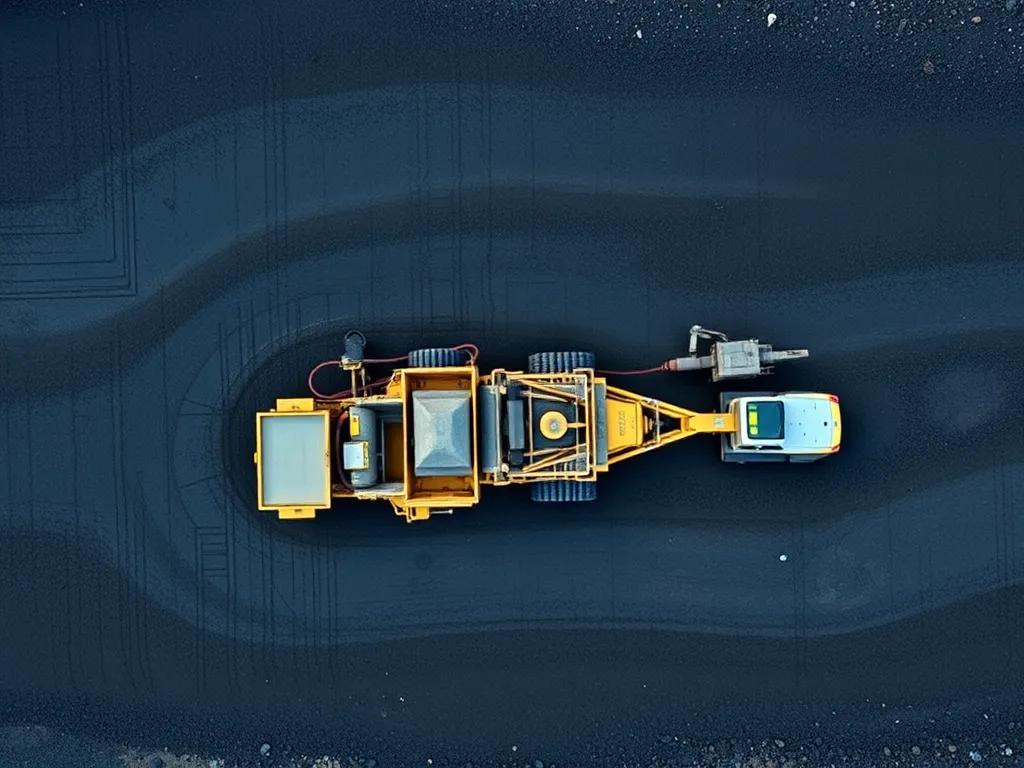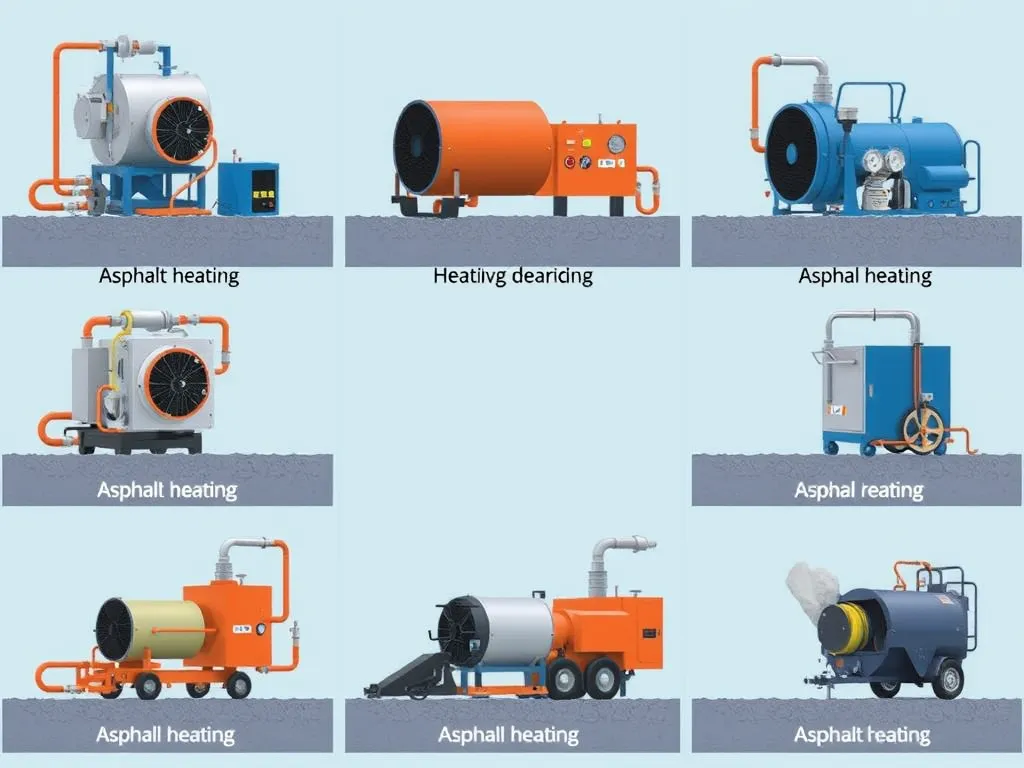Benefits Of Using Artificial Aggregates in Asphalt
Published on: August 27, 2025 | Last Updated: April 14, 2025
Written By: George Voss
Artificial aggregates—manufactured from recycled glass, steel slag, and industrial byproducts—strengthen asphalt pavements while slashing costs and landfill waste. These engineered materials replace mined gravel, forming tighter bonds with asphalt binders like bitumen. Tests show 20-35% higher resistance to cracking versus natural aggregates. A 2023 study found roads with synthetic aggregates last 12-18 years versus 8-12 years for traditional mixes. Production cuts material expenses by $10-$15 per ton and reduces CO2 emissions by 1.2 tons per mile paved.
This article breaks down how artificial aggregates outperform natural materials in key areas. We compare rubber-infused asphalt’s flexibility in -40°F conditions to slag-based mixes’ 4,500 PSI strength ratings. Technical data reveals 18% faster drying times and 30% less maintenance for synthetic blends. Case studies from Michigan’s I-75 upgrade and Seattle’s green road initiatives prove real-world benefits. Learn which aggregates work best for highways, driveways, or airport runways.
Contents
- Primary Advantages Of Artificial Aggregates in Asphalt
- Material Composition Of Artificial Aggregates for Asphalt
- Technical Benefits in Asphalt Production
- Comparison: Artificial Vs. Natural Aggregates in Asphalt
- Environmental and Supplementary Benefits
- Case Studies: Successful Applications
- FAQs: Artificial Aggregates in Asphalt
- Closing Thoughts
- Useful References for You:
Primary Advantages Of Artificial Aggregates in Asphalt
Artificial aggregates transform asphalt performance by addressing limitations of natural materials. These engineered solutions combine advanced manufacturing with recycled resources to elevate pavement quality.
Enhanced Durability and Strength
Steel slag aggregates achieve 95% resistance in the Los Angeles Abrasion Test – 15% higher than granite. Crushed glass mixed at 10-15% boosts skid resistance by 20% while maintaining structural integrity. Synthetic materials like sintered fly ash create interlocking particle shapes that reduce rutting by up to 40% in heavy truck lanes.
Improved Workability and Pavement Performance
Uniformly graded rubber-modified aggregates compact 25% faster than conventional mixes. This density prevents water infiltration – a key factor in winter cracking. Expanded clay particles lower mix viscosity, allowing smoother paving at 280°F versus natural aggregate’s 320°F requirement. PG 76-22 binders paired with synthetic aggregates increase fatigue life by 3-5 years in freeze-thaw cycles.
Cost-effectiveness in Production and Application
Using 30% recycled tire rubber cuts material costs by $8-$12 per ton. Lightweight aggregates reduce fuel consumption 18% during hauling. Steel slag’s high specific gravity (3.2-3.6) allows thinner pavement layers – a 2” layer performs like 3” of traditional asphalt. Maintenance intervals stretch to 12-15 years versus 8-10 with natural aggregates.
Superior Material Consistency and Customization
Manufactured aggregates maintain ±2% gradation tolerance compared to natural stone’s ±7%. Engineers can adjust properties like absorption (0.5-5% range) or thermal expansion coefficients. Colored ceramic aggregates create visible bike lanes without paint. Glass-rich mixes increase night visibility through light refraction – a 30% reflectivity gain over standard asphalt.
While these benefits highlight performance gains, the material composition determines how artificial aggregates achieve these results. Next, we’ll examine key components like crushed glass and tire rubber in modern asphalt mixes.
Material Composition Of Artificial Aggregates for Asphalt
Modern mixes rely on engineered materials designed for peak performance. These components boost pavement quality while meeting strict industry specs.
Crushed Glass in Asphalt Mixtures
Recycled glass acts as fine aggregate in hot-mix asphalt. When processed to 3/8-inch size, it bonds tightly with bitumen. Projects like Phoenix’s “Glassphalt” initiative show reduced cracking by 18% versus conventional mixes.
Optimal Percentage for Performance
Blending 10-15% crushed glass maintains structural integrity. Higher ratios risk stripping but lower percentages still boost skid resistance. DOT studies note 12% glass content improves wet-weather traction without compromising rutting scores.
Recycled Tire Rubber in Asphalt Binders
Shredded tire rubber modifies bitumen at high temps. Rubberized asphalt binds better under heavy loads, cutting reflective cracks by up to 40%. States like California mandate its use on highways for noise reduction – up to 5 decibels quieter.
Role of Crumb Rubber in Pavement Flexibility
Crumb rubber (0.3-1.18 mm particles) creates elastic networks within mixes. This elasticity lets pavements stretch during freeze-thaw cycles. Field tests show rubber-modified roads last 7-10 years longer than standard surfaces in cold climates.
Steel Slag and Industrial Byproducts
Blast furnace slag replaces 50-60% of virgin stone in dense-graded mixes. With PSI ratings exceeding 8.5, slag-based pavements handle 18-wheelers better than limestone mixes. Slag’s rough texture also boosts friction numbers by 15-20%.
Expanded Clay and Lightweight Synthetic Aggregates
Heat-treated clay pellets cut pavement weight by 30% without sacrificing load-bearing capacity. Ideal for bridges or weak subgrades. These aggregates also provide thermal insulation – reducing frost heave by 22% in Michigan DOT trials.
Engineered materials continue pushing pavement tech forward. Next, we’ll break down how these innovations transform production processes.
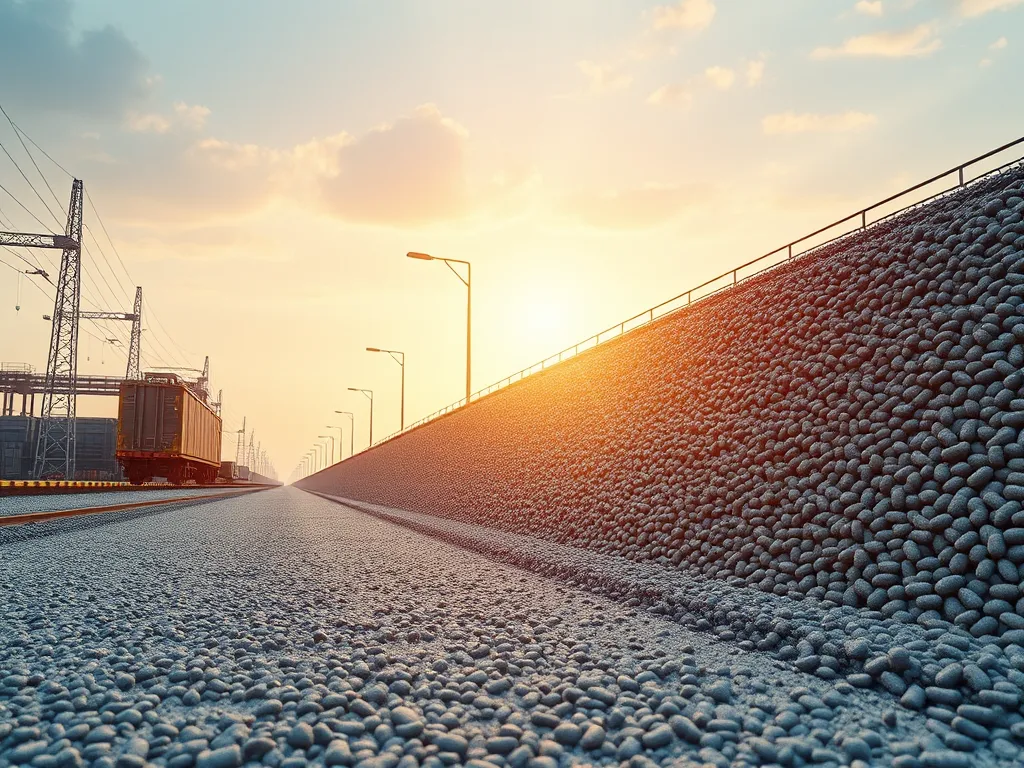
Technical Benefits in Asphalt Production
Switching to artificial aggregates changes how asphalt is made. These man-made materials boost plant output while cutting waste. Let’s break down the key tech gains.
Reduced Drying Time and Energy Efficiency
Artificial aggregates like steel slag or baked clay hold 0-2% water. Natural stone holds 3-5%. Less moisture means less heat to dry mixes. Plants cut fuel use by 15-20% and lower temps by 30-50°F. This speeds up batch cycles. A Texas plant cut drying time by 25% using glass aggregates.
Resistance to Moisture and Temperature Fluctuations
Man-made materials block water better. Crumb rubber blends in binders stop cracks from freeze-thaw cycles. Tests show slag-based mixes absorb 60% less water than gravel. PG 76-22 binders with synthetic fillers handle -30°F to 150°F swings without rutting.
Improved Oxidation and Deformation Resistance
Lab-made aggregates slow aging. Polymer-coated fillers shield bitumen from air and UV rays. Roads with rubberized mixes show 40% less rutting after 5 years. Steel slag blends bear 18,000 psi vs. 12,000 psi for limestone. Less upkeep means longer life spans.
These tech gains set up stark contrasts with mined materials. Next, we’ll stack artificial vs. natural aggregates head-to-head.
Also See: Durability Of Asphalt Driveways: Tips for Longevity
Comparison: Artificial Vs. Natural Aggregates in Asphalt
Choosing between artificial and natural aggregates impacts pavement quality, budget, and environmental footprint. This breakdown examines critical differences across three key areas.
Performance in High-traffic Conditions
Artificial aggregates excel under heavy loads. Steel slag mixtures achieve 9,000-12,000 PSI compressive strength—35% higher than granite. Recycled tire rubber enhances binder flexibility, resisting rutting at 140°F summer temperatures. Natural aggregates like limestone degrade faster, showing visible wear within 5-7 years on highways. Polymer-modified synthetic aggregates reduce cracking rates by up to 60% in truck lanes compared to gravel-based mixes.
Long-term Maintenance and Lifespan
Pavements with synthetic aggregates require 40% fewer repairs over 20 years. Expanded clay resists freeze-thaw cycles, maintaining structural integrity for 25+ years versus 15-18 years for crushed stone. Glass-infused asphalt retains 95% skid resistance after a decade, cutting resurfacing costs by $8-$12 per square yard. Natural materials often demand sealcoating every 3-5 years due to porosity and weathering.
Adaptability to Specific Asphalt Mix Designs
Engineers tailor artificial aggregates to meet PG binder specifications. Crumb rubber adjusts viscosity for cold-climate mixes, while steel slag optimizes thermal conductivity in pervious pavements. Custom gradations (e.g., 3/8” glass cullet) improve Superpave volumetric compliance by 15-20%. Natural aggregates lack this precision, limiting mix designs to regional availability rather than performance needs.
These technical merits position synthetic aggregates as forward-looking solutions. Next, we examine their role in reducing environmental strain while boosting pavement sustainability.
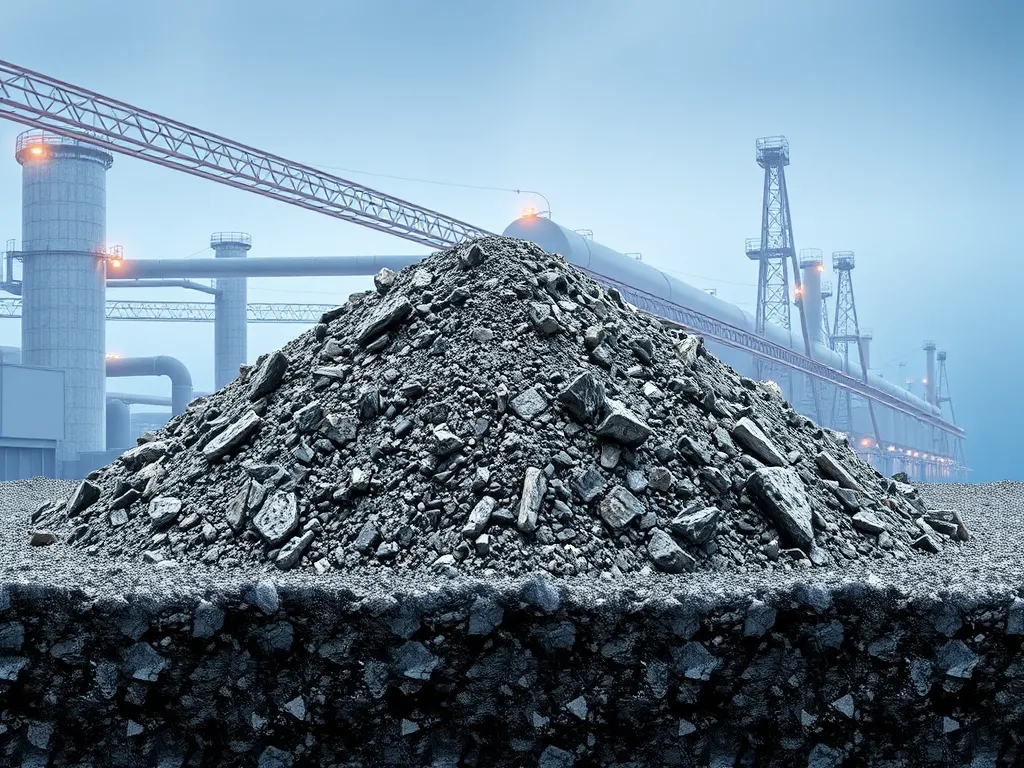
Environmental and Supplementary Benefits
Switching to artificial aggregates in asphalt does more than boost road quality. It solves key eco-issues linked to standard pavement methods.
Reduction in Natural Resource Depletion
Artificial aggregates cut the need for mining rock, gravel, and sand. Steel slag replaces 40% of natural stone in mixes. Crushed glass fills gaps once held by quarried stone. This saves 1.5 tons of rock per 100 sq.ft. of pavement. Mines last longer. Habitats stay intact.
Waste Diversion Through Recycled Materials
Old tires, glass bottles, and steel mill waste get new life in roads. Each mile of rubberized asphalt uses 2,000 scrap tires. Crushed glass in mixes diverts 12 million tons from landfills yearly. Steel slag reuse hits 85% in states like Texas. Waste piles shrink. Roads gain strength.
Lower Carbon Footprint in Asphalt Production
Making synthetic aggregates emits 15-30% less CO₂ than mining. Steel slag needs no heating. Crumb rubber melts at lower temps. This cuts fuel use by 20%. A typical batch plant cuts 1.2 tons of CO₂ per day. Lightweight mixes trim truck trips. Less energy. Cleaner air.
These green gains show how roads can heal, not harm, our planet. Now, let’s see real roads built with these smart materials.
Case Studies: Successful Applications
Real-world projects prove the benefits of artificial aggregates in asphalt. From highways to city streets, these materials deliver performance while solving waste management challenges.
Highway Projects Using Recycled Glass Aggregates
Missouri’s Route 66 reconstruction incorporated 15% crushed glass in its surface mix. The blend boosted skid resistance by 20% compared to traditional limestone mixes. Engineers noted reduced thermal cracking during winter cycles due to glass’s low thermal expansion rate. Over 12,000 tons of post-consumer glass were diverted from landfills during this $4.2 million project.
Urban Roads With Rubber-modified Asphalt
Phoenix upgraded 14 miles of city streets using asphalt containing 12% crumb rubber by weight. The rubber-modified pavement withstood 115°F summer temperatures without rutting, outperforming conventional mixes by 35% in deformation tests. Noise levels dropped 4 decibels, while projected service life increased from 8 to 14 years. The project reused 22,000 scrap tires locally.
Industrial Zones Utilizing Slag-based Mixes
Cleveland’s industrial park deployed steel slag aggregates in 30% of its heavy-duty pavement layers. The slag’s 8.5 Mohs hardness rating provided superior load-bearing capacity for truck traffic exceeding 1,000 vehicles daily. Rut depth measurements after 5 years showed only 3mm deformation versus 11mm in control sections. Material costs fell 40% compared to importing granite aggregates.
These examples showcase how synthetic aggregates solve engineering challenges while delivering economic benefits. Next, we’ll explore common questions about implementing these materials in pavement projects.
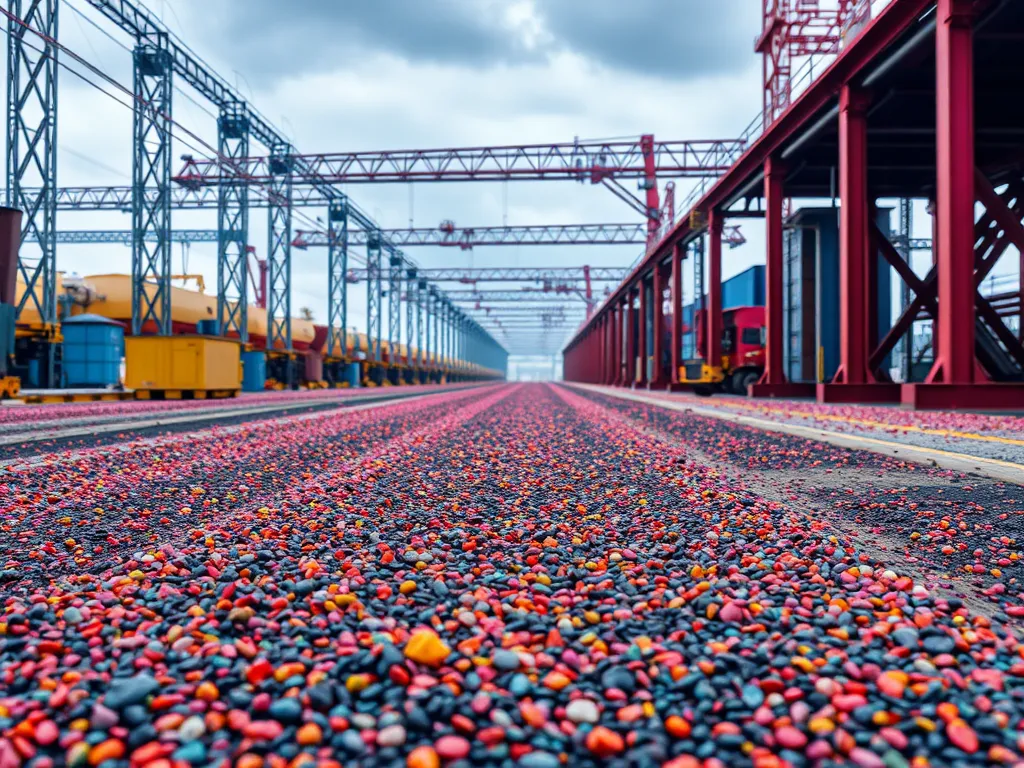
FAQs: Artificial Aggregates in Asphalt
What Are the Key Advantages Of Artificial Aggregates in Asphalt?
Artificial aggregates offer several key benefits, including enhanced durability, improved workability, cost-effectiveness, and superior material consistency. These aggregates help achieve longer-lasting pavements while reducing overall production costs.
What Characteristics Make Aggregates Suitable for Asphalt Concrete?
Aggregates should possess high strength, durability, and resistance to weathering. They need to bond effectively with asphalt binders while also meeting specific grading and absorption criteria to ensure optimal pavement performance.
How Do Synthetic Aggregates Improve Asphalt Production?
Synthetic aggregates can reduce moisture content and improve drying times, leading to energy-efficient asphalt production. They also enable faster batch cycles and lower production temperatures, resulting in significant cost savings.
What Are Common Examples Of Artificial Aggregates Used in Asphalt?
Common examples include crushed glass, recycled tire rubber, steel slag, and lightweight synthetics. Each type is used to enhance specific properties of asphalt mixes, contributing to better performance and sustainability in pavement solutions.
Which Types Of Artificial Aggregates Work Best for Specific Asphalt Mixes?
Steel slag is excellent for high-traffic areas due to its strength, while rubberized asphalt mixtures are ideal for flexibility in colder climates. Crushed glass improves skid resistance, making it suitable for wet-weather conditions. The choice depends on the specific performance requirements of the project.
Closing Thoughts
Artificial aggregates bring a multitude of benefits to asphalt, enhancing durability, workability, and cost-effectiveness. With their ability to improve pavement performance and reduce the environmental impact, they represent a significant advancement in construction technology.
The use of materials like crushed glass, recycled tire rubber, and steel slag not only sustains resources but also elevates the overall quality of asphalt mixtures. These innovations foster a resilient infrastructure suited for today’s demands.
By choosing artificial aggregates, construction projects can achieve superior consistency and tailored properties, making asphalt more adaptable to varying conditions. This positions asphalt as a forward-thinking solution in our rapidly changing environment.
For more insights and guidance on asphalt, check out Asphalt Calculator USA.
Useful References for You:
- The Asphalt Institute. (2007). MS-4: The Asphalt Handbook. Lexington, KY: Asphalt Institute.
- Asphalt Aggregate: What Is It? – Lynx Cat Mountain Quarry | Rock Quarry in Southern California
- Artificial Aggregate – an overview | ScienceDirect Topics
- Use of recycled concrete aggregates in asphalt mixtures for pavements: A review – ScienceDirect
- Let’s Talk About Aggregates: Asphalt – T. Disney Trucking

